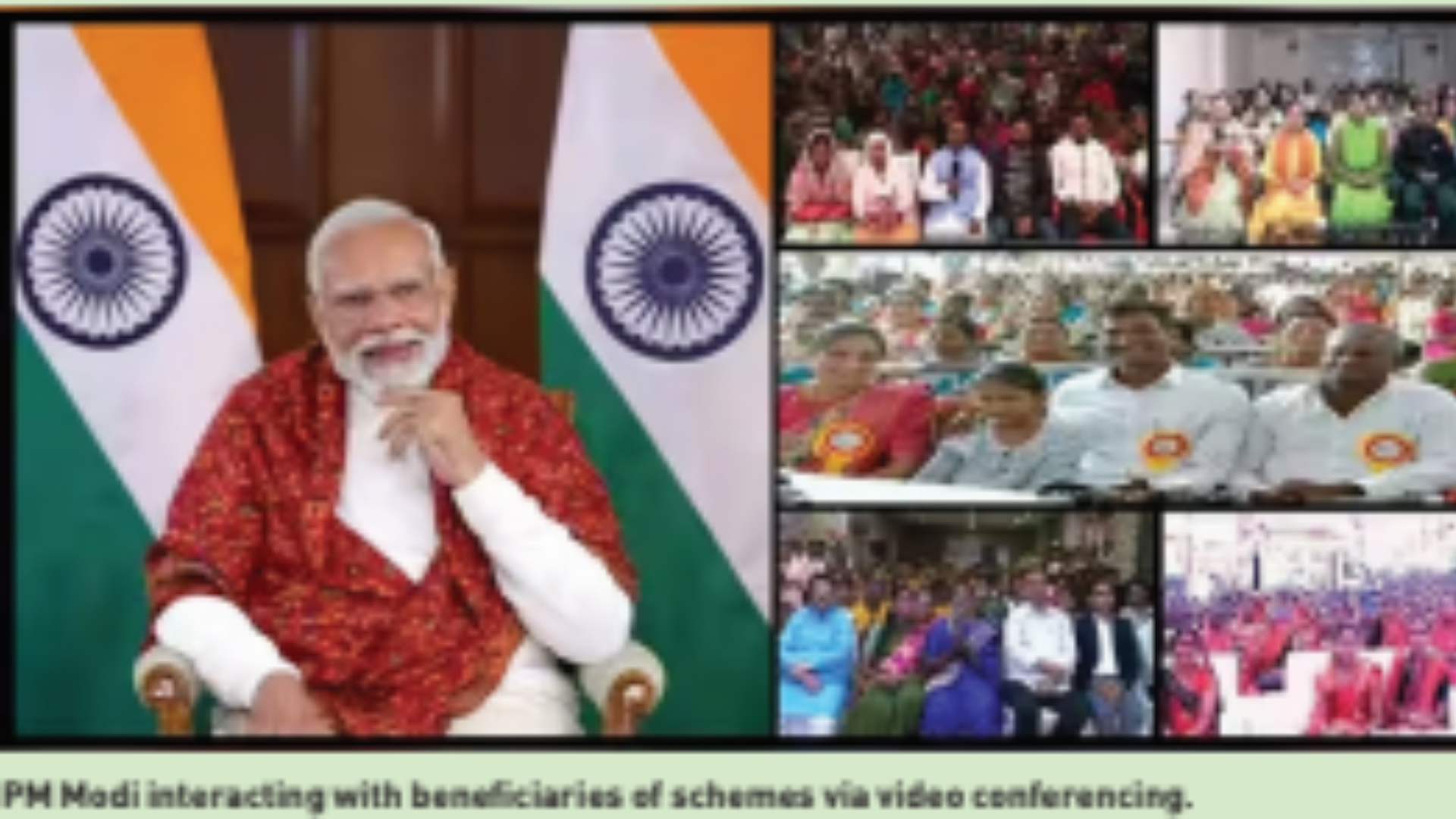The Ministry of Statistics and Programme Implementation (MoSPI) recently unveiled key findings from the Household Consumption Expenditure Survey (HCES) conducted during 2022-23. While the comprehensive report is awaited, the released data offers profound insights into Prime Minister Narendra Modi’s visionary leadership over the past decade—tangible vikas reaching every household in the country at an unprecedented scale.
These insights are crucial for citizens to assess the Modi government’s performance over the last decade and make electoral decisions for the upcoming Lok Sabha elections. Under PM Modi’s governance focused on “Antyodaya” and uplifting the marginalized, India’s ruralurban divide in household consumption has sharply reduced from 83.9 percent in 2011-12 to just 71.2 percent in 2022-23—marking rapid bridging of this gap under PM Modi’s policies.
Driven by the government’s unwavering commitment to grassroots, rural MPCE has risen a staggering 164 percent compared to 146 percent growth in urban areas—proving rural India is now marching ahead at the vanguard of India’s consumption story, leaving behind the days of neglect under previous regimes. It also attests to the efficacy of PM Modi’s approach, solidifying the government’s standing among voters and explaining reasons why PM Modi enters every election on a pro-incumbency stance.
According to the HCES, there has been a discernible shift in consumption patterns within rural and urban households. Over the past 11 years, the proportion of household expenditure on food has decreased from 52.90 percent in rural areas and 42.62 percent in urban areas to 46 percent and 39 percent respectively. This shift not only indicates improved food security but also a greater disposable income among households, which is being directed towards durable goods and consumer services.
Notably, households are allocating less expenditure towards staple grains and more towards protein-rich diets, indicative of rising standards of living. As PM Modi puts it, his efforts are driven towards ensuring every Indian can live “a life of dignity and opportunity”— HCES validates that vision being translated under his leadership. This transition mirrors national economic growth translating into household income growth. Under theleadership of PM Modi, households are not only more assured in meeting their basic needs but are also realizing their aspirations like never before.
A larger segment of the population now has access to electronic goods, quality education, electricity, renewable energy, and improved healthcare. Such progress would have been inconceivable without the government’s accelerated expansion of services, as exemplified by initiatives like the Saubhagya Yojana for electricity connections and the Ujjwala Yojana, which distributed 10 crore free LPG cylinders. Another noteworthy observation is the substantial reduction in tax and cess expenses.
In rural areas, tax expenses have plummeted from 0.25 to 0.13, and in urban areas, from 0.82 to 0.24. This underscores the Modi government’s efficient utilization of taxpayer funds, resulting in enhanced standards of living while alleviating the tax burden on citizens. It stands as a stark contrast to the UPA government’s mismanagement of taxpayer money through various scams and scandals, with no tangible benefits delivered to the populace.
As PM Modi reinforced, “I have practically experienced poverty. I have lived that life”. This unique, heartfelt connection with fellow Indians and commitment to their upliftment makes the honorable Prime Minister the one leader who can architect Bharat’s emergence as a self-reliant, developed nation grounded in equity and access for the marginalized.
The latest HCES data demonstrates the Modi government’s success in laying the foundational infrastructure across the country that will power our ascent in the century ahead. These governance standards set by PM Modi will undoubtedly weigh heavily on the minds of voters in the upcoming elections.
The paradigm shift in governance methodology and the burgeoning confidence of citizens in the honorable Prime Minister form the cornerstone for the nation’s journey towards development under Modi 3.0.
Lakshit Mittal is member, Policy Research and Training (PRT), BJYM.

